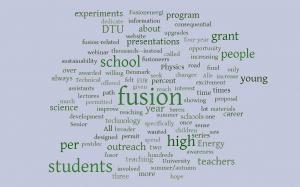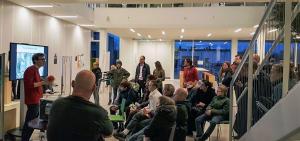Technical University of Denmark wins fusion outreach grant
A consequential grant from the Danish Novo Nordisk Foundation will permit two fusioneers from the Technical University of Denmark (DTU) to broaden their educational outreach efforts with a program called "Fusion Energy for All," designed for high school students and their teachers.
Søren Bang Korsholm and Alexander Simon Thrysøe estimate that they have given over 200 presentations to high school students over the course of their careers. "We have always felt that we had an obligation to reach out to young people and share the interest and excitement of a career in physics and specifically fusion. As much as time permitted, we were always willing to get involved."
But when the Novo Nordisk Foundation called out for applications earlier this year for programs that could "increase the science capital of children and young people by showing them [...] how science and technology improve the lives of people and the sustainability of society," they immediately saw that fusion was a good fit—and that a grant could be a game changer. "Here was the opportunity to do more of what we wanted to do, increasing our interaction with young people and reaching thousands—instead of hundreds—of students."
And not only students. The project they proposed was two-tiered, with one program for high school students and another for high school teachers.
Fusion for high school students:
- Taking fusion on the road, making presentations at high schools and engaging students in demonstration experiments—20-200 students per presentation, 40 presentations per year
- All-expense-paid summer school at DTU (5 days), with experiments at the NORTH tokamak and the DTU fusor—30 students, once per year
Fusion for high school teachers:
- Fusion webinars on how to teach fusion energy, with teaching material—20+ teachers per webinar series (a series of three lectures), offered two times per year
- All-expense-paid autumn school at DTU (3 days), with experiments at the NORTH tokamak and the DTU fusor—15 teachers, once per year
In June, the Novo Nordisk Foundation awarded the "Fusion Energy for All" (Fusionenergi til Alle) proposal a four-year outreach grant worth EUR 530 K.
Alexander, who is a postdoc in the Physics Department at DTU, will spend about 50 percent of his time the program while Søren, Senior Scientist, will dedicate about 10 percent. The grant will also fund upgrades to the DTU Fusion Roadshow experiments, support from research technicians and student assistants, a new website and branding, the development of teaching materials, and the summer/autumn schools.
"We hope to inspire a lot of young people to seek out more information about fusion science and technology, and maybe choose a fusion-related career path. And, in a broader sense, spread the awareness of fusion and its potential."
A reminder: The European Fusion Teacher Day takes place remotely on 2 October, organized by the FuseNet association.



